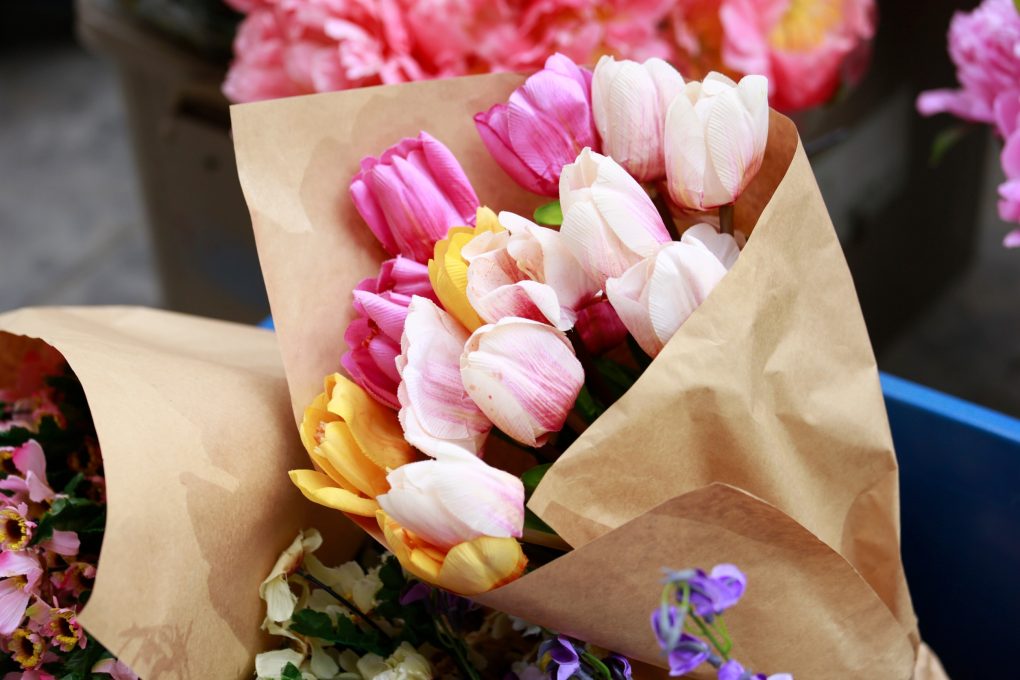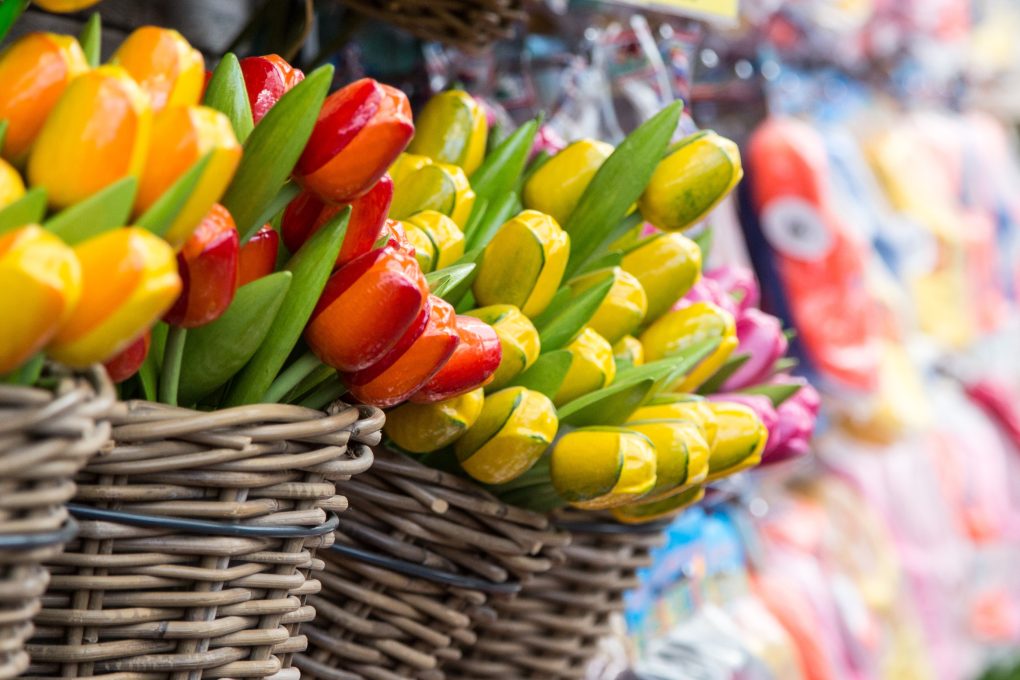How To Store Tulip Bulbs After Flowering: The Right Way To Store Tulip Bulbs
Tulip bulbs are a beautiful addition to any garden, and they’re also popular flowers to plant in arrangements. But what should you do with tulip bulbs once their flowering is over?

This blog post will discuss the best way to store tulip bulbs after flowering and how to keep them safe from frost and pests. We’ll also provide tips on when to harvest your tulip bulbs and how to preserve them for future use. So read on to learn about the best way to store tulip bulbs and get ready to enjoy their vibrant beauty year-round.
Table of Contents
How Long Can You Store Tulip Bulbs?
Tulip bulbs can be successfully stored for up to 12 months if cared for properly. To store tulip bulbs, place them in a cool, dark place in a moisture-retaining container such as a plastic storage bag or another storage container. Tulip bulbs should feel plump, heavy, and firm before storing. When storing tulip bulbs, place them into storage bags using mesh or paper bags for breathability. These bags help prevent moisture buildup and allow the bulbs to stay dry and fresh. Place the bulbs into storage bags, keeping them separated from each other to prevent any damage from occurring.
To ensure that tulip bulbs maintain their quality after being stored, it is essential to store them in a well-ventilated location warm enough to develop flower buds in storage. Once you have finished planting your tulip bulbs, please leave them in the ground until spring, when they will begin blooming.
Storing Tulip Bulbs
Step 1: Cut Off Bulb Stems
To ensure the health of tulip bulbs, it is best to cut off their stems after they have finished blooming. This will prevent the bulbs from producing seeds, which can lead to bulb death. Additionally, deadheading tulips can prevent the formation of seedheads. For some bulbs, such as daffodils and tulips, it may be beneficial to leave the seedheads on the plant until they have fully developed. Doing this will allow you to enjoy their striking appearance for longer. When deadheading tulips, cutting them above the leaves is crucial instead of just at the stem to prevent damage to the plant. By cutting away withered stems and foliage, you are helping your bulbs stay healthy and vibrant.
Step 2: Pull Out the Bulbs
To store tulip bulbs, it’s vital that you first dig them up and pull them out of the ground. Once you’ve pulled out the bulbs, store them in a dark, dry place such as a garage or basement, where the temperature is between 40-45°F. Alternatively, you can also store them in a drawer in your refrigerator away from produce. If you’re storing potted tulips, place them in an unheated garage over winter. Finally, place bulbs in a paper bag and an excellent place like the refrigerator if you want to store them for future planting. This will help to prevent the bulbs from hardening and dying over time. Whether you’re planting new tulips or just storing existing ones, taking care of them properly is essential to ensuring they thrive and bloom throughout the growing season.
Step 3: Clean Off the Dirt from the Bulbs
To store tulip bulbs, it’s important to clean them thoroughly before storage. This can be done by wiping off the dirt from the bulbs and placing them in a cool, sharding place to dry for a couple of days. After drying, you may gently wash the soil off with a hose for some plants, such as dahlias. Gladiolus corms are best left unwashed and allowed to dry. Overwatering tulip bulbs will promote bulb rot, so ensure they stay cool after storing them. Finally, do not overwater tulip bulbs when storing them; soggy soil will promote bulb rot. Storing bulbs properly will help ensure their long-term storage and keep them healthy and vibrant during winter.
Step 4: Wrap the Bulbs

The bulb tulips should be wrapped in a newspaper after they are stored. This helps to maintain moisture levels within the bulb and prevents it from dying. The bulbs should be cleaned and dried before being wrapped in newspaper. It is important to ensure that the foliage of the tulip has turned yellow and shriveled, as this indicates that the bulb is ready for storage. Wrapping tulip bulbs in a protective covering helps them to harden off and stay alive during storage. It is also vital to avoid exposing the bulbs to sunlight or humidity while they are being stored, as this can lead to rotting. Instead, it is best to store tulip bulbs in a cool, dry place away from direct sunlight. Wrapping the bulbs can help ensure their survival and vitality during storage.
Step 5: Storage Location
To store tulip bulbs, place them in a cool and dry place such as a refrigerator at 40°F (4°C). Avoid storing tulip bulbs in sealed plastic bags or plastic bins, as these are not breathable. Instead, opt for mesh bags, net string bags, or paper bags to allow the bulb to breathe. Also, avoid storing tulip bulbs with high-temperature fluctuations, such as sunlight or hot weather. The optimal temperature range for storage is 65°-65°F (18°-20°C).
The bulbs can be stored until spring without any loss of quality. After flowering, tulip bulbs can be stored in an open, airy place for a few weeks. However, tulip bulbs should be kept dry after being removed from the soil and stored in a dry environment.
Do You Have To Dig Up Bulbs?
If you own tulip bulbs, you don’t have to dig them up yearly. Tulip bulbs prefer to stay in the soil and can rebloom the following year if left in place. However, it may be necessary to dig them up if the plants seem less vigorous and offer fewer blooms, indicating overcrowding.
It is essential to provide tulip bulbs with consistent moisture and sunlight, as well as adequate soil nutrients and fertilizer. Tulip bulb care requirements differ from other spring bulbs, so follow the specific guidelines for your tulips carefully. If you decide to dig up tulip bulbs, it is better to wait until the foliage yellows.
When to Dig Up Tulips?
When to dig tulip bulbs is a question that comes up during the season. The foliage of tulip bulbs begins to yellow and wilt as its foliage becomes brittle and breaks. At this point, tulip bulbs should be dug up for optimal bulb growth. The best time to dig tulip bulbs is in the summer after the flowers have faded away and the plants turn brown and die back.
June is the optimal time to lift tulips when the foliage on the plant has turned brown and dried. It is best to plant tulip bulbs quickly because they may need more sunlight or fertilizer in winter. After planting tulips, it’s best to water them once a week with a drenching of 10% compost tea. This will help prevent rot and promote bulb growth.
Do Tulip Bulbs Need to be Refrigerated?

If you are planning to store tulip bulbs after flowering, it is important to follow the proper steps. Tulips are known for their exquisite bloom, but they also go through a period of hibernation after blooming.
This is called winter, when the tulip bulbs should be kept in a cool place, but not necessarily in the refrigerator, according to some people. Not storing them in the fridge could make them weak and pale.
Storing them in the fridge is a mistake since ethylene gas emitted by fruits and vegetables could harm the tulip bulbs. It is vital to keep tulip bulbs away from the fridge’s light and protected in an opaque drawer when storing them in the fridge.
